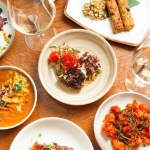
Japan has made history by becoming the fifth nation to land a spacecraft on the moon, and the first to do so with pinpoint accuracy. The Smart Lander for Investigating Moon (SLIM) touched down on the lunar surface on Friday, January 19, 2024, after a four-month journey from Earth.
What is SLIM and why is it important?
SLIM is a small-scale exploration lander designed by the Japan Aerospace Exploration Agency (JAXA) to demonstrate the technology for precise and controlled lunar landings. It carries a variety of scientific payloads, including an analysis camera and a pair of lunar rovers, to investigate the moon’s origins and geology.
SLIM’s mission is important for the future of lunar exploration, as it enables the placement of spacecraft and instruments in specific locations of interest, such as craters, caves, or near resources. SLIM also paves the way for more ambitious missions, such as sample return, human landing, and lunar base construction.
How did SLIM achieve the pinpoint landing?
SLIM’s pinpoint landing was made possible by a combination of advanced navigation, guidance, and control systems. SLIM used a high-resolution camera to capture images of the lunar surface and compare them with a pre-loaded map to determine its position and velocity. SLIM also used a laser altimeter to measure its altitude and a laser range finder to avoid obstacles.
Keep Reading
SLIM’s thrusters were controlled by a sophisticated algorithm that adjusted the thrust and direction according to the desired landing site. SLIM’s landing site was a flat area near the lunar equator, about 100 meters in diameter. SLIM aimed to land within 100 meters of the center of the site, with an accuracy of 10 meters.
SLIM’s landing was not without challenges, however. SLIM encountered a problem with its solar panel, which reduced its power generation and limited its communication with Earth. SLIM also had to deal with the harsh environment of the moon, such as extreme temperatures, radiation, and dust.
What are the next steps for SLIM and JAXA?
SLIM’s mission is expected to last for about two weeks, depending on its power and communication status. SLIM will conduct various experiments and observations on the lunar surface, such as measuring the temperature, magnetic field, and gravity. SLIM will also deploy its two rovers, which will explore the surrounding area and take pictures.
JAXA plans to continue its lunar exploration program, with the aim of establishing a sustainable presence on the moon. JAXA’s next mission is the Lunar Polar Exploration (LUPEX), which will land a rover near the south pole of the moon in 2026. LUPEX will search for water ice and other resources that could support human activities on the moon.
JAXA’s president, Hiroshi Yamakawa, expressed his pride and excitement over SLIM’s achievement, saying that it was “a greater step forward” for Japan and the world. He also thanked the public for their support and interest in the mission, and invited them to follow SLIM’s progress on JAXA’s website.




























